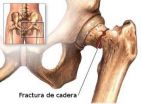(Press-News.org) BIRMINGHAM, Ala., - Gliomas are brain invaders. A kind of malignant tumor cell, gliomas branch out like tendrils from a central tumor source, spreading cancer throughout the brain. Traditional therapies, such as cutting out the tumor surgically, can be ineffective if the cells have already spread. Researchers at the University of Alabama at Birmingham may have come upon a way to stop a glioma invasion in its tracks, using a drug already approved for use in Europe.
Much like early explorers of the Old West followed rivers and streams, depending on them to provide drinking water and food, gliomas spread through the brain by following the path of blood vessels, tapping into those vessels for the nutrients they need to survive. Cut that glioma off from the blood supply, and it starves.
"An explorer lost in the wilderness without food and water soon succumbs and dies," said Harald Sontheimer, Ph.D., director of the UAB Center for Glial Biology in Medicine and senior author on the paper. "A glioma that can't find and tap into a blood vessel will also die."
In a paper published March 30, 2011 in the Journal of Neuroscience, Sontheimer and co-author Vedrana Montana, Ph.D., discovered that bradykinin, a peptide that increases the size of blood vessels, is the mechanism glioma cells use to find blood vessels. Glioma cells carry a receptor for bradykinin, called the B2R receptor. Using that receptor to attract bradykinin gives the cell a navigator to lead it to blood vessels. Block the receptor from interacting with bradykinin and the cell will end up lost in the wilderness.
The researchers introduced a B2R inhibitor known as HOE 140, a laboratory version of a drug approved for use in Europe for hereditary angioedema called Icatibant. HOE 140 bound to the B2R receptor on glioma cells, interfering with the receptor's opportunity to bind to bradykinin. The results were impressive.
"We found that 77 percent of glioma cells with bradykinin were able to locate a blood vessel and tap into its nutrients," said Montana. "However, when we blocked the B2R receptors from interacting with bradykinin, only 19 percent of glioma cells were able to find a blood vessel."
The researchers used human glioma cells transplanted into a mouse model and, using time-lapse techniques on a laser-scanning microscope, tracked the ability of the cells to navigate to blood vessels by means of fluorescent markers attached to the cells.
"Targeting the B2R receptors is an elegant and so far unexplored approach to treat gliomas, one of the most devastating types of brain tumor," said Sontheimer. "Icatibant, which is already in use in Europe, and its ability to block B2R receptors may prove to be very promising target for further investigation."
###
The American Brain Tumor Association provided funding for this research through a post-doctoral fellowship awared to Montana.
About 18,000 Americans develop gliomas each year and about half will die within 12 months of diagnosis, according to the Society for Neuroscience.
About UAB
Known for its innovative and interdisciplinary approach to education at both the graduate and undergraduate levels, the University of Alabama at Birmingham is the state of Alabama's largest employer and an internationally renowned research university and academic health center whose professional schools and specialty patient care programs are consistently ranked as among the nation's top 50; find more information at www.uab.edu and www.uabmedicine.org.
EDITOR'S NOTE: The University of Alabama at Birmingham (UAB) is a separate, independent institution from the University of Alabama, which is located in Tuscaloosa. Please use University of Alabama at Birmingham on first reference and UAB on second reference.
VIDEO: www.youtube.com/uabnews TEXT: www.uab.edu/news TWEETS: www.twitter.com/uabnews
UAB research targets way to stop brain tumor cell invasion
2011-03-30
ELSE PRESS RELEASES FROM THIS DATE:
Mothers abused during childhood at risk for having low birth weight babies
2011-03-30
Mothers who were maltreated as children have increased risk for giving birth to low birth weight babies. The findings, by researchers at the University of Washington, are the first to show that maternal maltreatment can affect the health of offspring.
The study also finds that childhood poverty and substance use during adolescence and pregnancy contribute to low birth weight, which is linked to infant mortality and chronic health problems.
"Our findings suggest that a mother's economic position in childhood and her experience of maltreatment during childhood have implications ...
Babies who sleep with smoker parents exhibit high nicotine levels
2011-03-30
"Third-hand smoke" stuck to skin or clothing is responsible for the high nicotine levels seen in babies who share a bedroom with their smoker parents. This is the conclusion of a study carried out in Catalonia, which also shows that ventilating bedrooms is not effective in reducing the levels of toxins from passive smoking.
"Passive smoking is the leading preventable cause of childhood death in developed countries", Guadalupe Ortega, lead author of the research study and coordinator of the Atenció Primària Sense Fum programme at the Department of Health of the Generalitat ...
MedWOW Upgrades Sales Leads Program
2011-03-30
MedWOW.com, the multilingual, global online marketplace for medical equipment, announces the launch of their upgraded sales leads program. All of the business leads generated are pre-qualified, registered buyers, looking for services and devices the merchants are offering. More than 10,500 medical equipment professionals visit the MedWOW site daily and transactions occur quickly and on a regular basis, so leads are kept fresh and current.
When purchasing leads credits, dealers now have the option of choosing money-saving discounted packages. The larger the package of ...
Free phone app helped doctors perform better in simulated cardiac emergency
2011-03-30
Doctors who used a free iPhone application provided by the UK Resuscitation Council performed significantly better in a simulated medical emergency than those who did not, according to a study in the April issue of Anaesthesia.
"Every year approximately 30,000 people in the UK have an unexpected cardiac arrest in hospital and, despite significant advances in resuscitation research, survival rates for adults suffering a cardiac arrest remain poor" says Dr Daniel Low, the consultant anaesthetist who developed the application.
"More than 60,000 free copies of the iResus ...
Spiders target sexy signals from 'vibrating' insects
2011-03-30
Insects using vibration to attract a mate are at risk of being eaten alive by killer spiders, Cardiff University scientists have discovered.
Studying spider behaviour experts from Cardiff University's School of Biosciences found that the vibrations used by leafhoppers and many other insects to attract a mate can be intercepted and used by predatory spiders to identify their prey.
Predators are already known to exploit the sight, sound and smell communications of their prey – but this is the first time that scientists believe they have discovered predators such as ...
Gene combinations are found to be related to hip osteoporosis in postmenopausal women
2011-03-30
This release is available in French and Spanish.
Women with osteoporosis in their hip suffer menopause two years earlier than healthy women, a study conducted at the University of Granada says. Additionally, although further study is required, researchers have found at least three genetic markers associated with osteoporosis in the hip in postmenopausal women.
Osteoporosis in the hip increases the risk of suffering fractures, which is extremely disabling for the patient, and represents a high cost for the health public system. The aim of this research study developed ...
New Service Already Helping Companies Access Corporate Funding Solutions
2011-03-30
A two-month old new service - www.worldwideprojectfinance.com - aimed at business owners looking for development funding for medium to large scale projects, has already helped several companies on their way to potentially securing corporate finance.
This service - which offers a range of worldwide corporate funding options from $5m - can help businesses potentially benefit from the availability of 100% funding for worldwide projects and with a few limitations.
In just the first two months of business they have already helping the following projects access potential ...
Ambrico Announces Exciting Business Partnership with Hanson Brick
2011-03-30
American Brick Company (Ambrico), creators of the popular E-Z Wall thin brick installation system and providers of high quality brick products and services, are excited to announce a new partnership with Hanson Brick. This latest partnership brings the highly valued Hanson VersaThin thin brick products directly to Ambrico customers. Specializing in high quality clay brick and thin brick products, Ambrico is thrilled to have Hanson VersaThin on their team.
Hanson Brick, North America's largest brick manufacturer, has a total capacity of more than 1.7 billion bricks. ...
Canadian Journal of Cardiology publishes advice on genetic testing of inherited cardiac arrhythmias
2011-03-30
Philadelphia, PA, 29 March, 2011 – The Canadian Cardiovascular Society and Canadian Heart Rhythm Society have produced the first-ever comprehensive guidelines on the use of genetic testing in the clinical management of inherited heart rhythm disorders, released in the March/April issue of the Canadian Journal of Cardiology (http://www.onlinecjc.ca/) published by Elsevier. The guidelines, entitled "Recommendations for the Use of Genetic Testing in the Clinical Evaluation of Inherited Cardiac Arrhythmias Associated with Sudden Cardiac Death," were chaired by Dr. Michael Gollob ...
Smoking in combination with immunosuppression poses greater risk for transplant-related carcinoma
2011-03-30
Spanish researchers have found that liver transplant recipients who quit smoking have a lower incidence of smoking-related malignancies (SRM) than patients who keep smoking. In fact, SRMs were identified in 13.5% of deceased patients and smoking was associated with a higher risk of malignancy in this study. Full findings are published in the April issue of Liver Transplantation, a journal of the American Association for the Study of Liver Diseases.
While smoking is a well-known malignancy risk factor both in the general population and in liver transplant recipients, smoking ...




